The Art of Ghalamkari
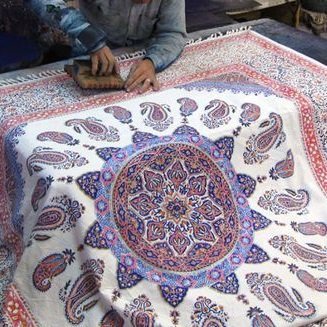
The origination and history of painting or printing on cloth, famed today as Ghalamkari (Chitsazi) is not obvious. Maybe the most comprehensive account to date is that given by Phyllis Ackerman, on behalf of another author, in the 3rd volume of “A Survey of Persian Art” by Arthur Upham Pope, based on which this craft is assumed to have its origins in the Ghaznavid era.
The issue worth nothing is that there is a high correspondence between the patterns of Ghalamkari and those of carpets, tiles and even, to a great extent, of plaster melding specially because the different craftsmen wood get together and make a new design out of existing ones. This action more or less exists today, and that is why you usually find the same oddly Persian patterns repeated in and common to carpets tiles and ghalamkari, particularly in the borders of the cloth.
Another issue worth talking about is that when during and after the Safavid Era Ghalamkari became more popular, Ghalamkar artists strove to make fresh patterns according to the old ones. This impression can be clearly discovered upon examination of each patterns, particularly in the borders of the cloth. Therefore, when a pattern has been adapted from either an old Ghalamkar or carpet and tile patterns and repeated in a new shape, this can be recognized and the development of the pattern followed through its different stage.
Ghalamkari Cloth
A distinguished handicraft of Isfahan that is created with love and interest is the Ghalamkari cloth. It is a great fabric with some printed designs on the center or its borders that can be in various patterns of flowers, birds, palaces and other things. Isfahan is the heart of making this eye-catching art in the world. Isfahan Persian handicrafts and souvenirs are very known in the world.
History of Ghalamkari
One of the most splendid handicrafts of Iran is Ghalamkari cloth. It is a type of fabric with some paintings which dates back to Ghaznavied Era. The designs in this cloth are like that in the tiles in the mosques and the carpets. Persian patterns are often repeated in Ghalamkari fabric, particularly in its borders. Some people think that as this art has ordinary designs and patterns, it is older than the art of carpet weaving. Ghalamkari Cloth is one of the genuine Persian handicrafts.
Introduction of Ghalamkari Cloth
Isfahan, the cultural heart of Iran, is the native home of most splendid arts and handicrafts of the world. A variety of arts like Minakari (enameled), Khatam Kari, Firoozeh Koobi (turquoise), Termeh, Toerutics (engraving), filigree, Moaragh (marquetry) and Ghalamkari are originated or thrived in this city. As the people of this city are fascinated by art and culture, they pay a great attention to handmade materials and cultural development. So, a lot of workshops and professional masters work and teach their students in a variety of majors in this magnificent and historical city.
Isfahan Souvenirs
Persian Painting this fabric might have previously done with some organic colors like raw sienna rather than the chemical ones that are used today. The material utilized to create Ghalamkari cloth is cotton or silk. As printing designs on cloth began in the Sassanid Era, some people think that the art of making Ghalamkari cloth goes back to that time and after that developed in Safavid Era in Isfahan.
Introduction of Ghalamkari
Ghalamkari of Isfahan is also named as Chitsazi and Calico work. The word originally pertains to making something on cloth with a pencil. It could be in black and white or in multiple colors. Major mall of Isfahan has been the center of Ghalamkari for long timea because there are a lot of workshops where professional masters and their students work.
This fabric was used to make expensive clothes for famous and royal families who had a high social level in old times. Some gold and silver threaded designs were observed in this fabric. The other advantages of Ghalamkari fabric was connected to its role in interior design to sew curtains, wall coverings and bedspreads. Today, Ghalamkari cloth is mostly used to make purses, scarves, wallets, mats and tablecloths. Isfahan is the heart of this fantastic art with different products which attract the attention of everyone.
Ghalamkari Isfahan
Making this art was truly hard and time-consuming in the past since the masters had to sketch all lines and patterns with a specific pencil. The problem of this approach was the production of unsymmetrical designs that were not in harmony with each other that caused the higher price of the product. Then, pre-designed outlines were created on some wooden frames to work as a stamp which eased the process of this art to make symmetrical designs in a much shorter time. These fabrics, based on their design, were applied for covering walls or curtains in luxury celebrations and religious ceremonies.
Designs of Ghalamkari Fabric
There are different designs that are printed on cotton, silk, and flax cloth to create a splendid Ghalamkari fabric that is painted with chemical colors. Some of the most significant ones are listed here:
• Historical sights of palaces of Persepolis
• Miniature
• Bushes and flowers
• Poem inscriptions
• Animals
• Historical events
• Traditional Iranian fiction stories
As the designs of this handicraft may be full of colors, a natural view of the named patterns may be seen in this fabric.
Materials to Make Ghalamkari Fabric
Materials are the most significant item to start every business since you cannot do anything without suitable devices. There are many tools and materials needed to make Ghalamkari cloth.
• Colors: two main colors to make this fabric are black and red.
• Unbleached Calico
• Pomegranate skin
• Herbal dyes
• Long cloth: it should be made of cotton or silk
• Wooden frame
• Stamps: they are usually made of peach or pear trees
It is desirable to use some outlines on the stamps in order to make a symmetrical vision. Paisley, flowers, birds, Persepolis and inscriptions are among the most known templates that can be prepared or obtained t in advance.
Steps
In order to create Ghalamkari cloth, these steps must be followed:
• Put the cloth in the pool for 5 days
• Bump the cloth to a rocky surface to take extra materials out of it
• Keep it under the sun to be dry
• Put it in pomegranate skin and herbal dyes to be yellow
• Make a template on the stamp
• Cover the surface of stamp in the color
• Put the stamp on the color in an orderly way
• Tap the stamp with hand a few times to be sure of the color transfer
• Boil the cloth in water
• Add some materials to water to fix the color
This Ghalamkari cloth has a lot of fans int he world that seek for the greatest quality one in Isfahan. Moreover, some other cities in Iran like Tabriz, Rasht, Kashan and Tehran sell this cloth. By the development of technology and the advent of online handicrafts stores, people would rather buy their fancy items online and save their time, money and energy. Naghsh-E-Jahan Square and the Great mall of Isfahan are the greatest places to buy the best Ghalamkari fabric.
GHALAMKARI PRODUCTS
If you are keen on having an expensive decoration at your home to enjoy the beauty of past generations’ art and culture, or you want to get a special present for your family members, friends and colleagues, one of the best recommendations which can be in one or as a wholesale product is Ghalamkari fabric. It is desirable to have this piece of art in your daughter’s dowry since it brings luck and fortune to newlyweds.
As it was previously stated, a lot of people are fascinated by having Ghalamkari cloth for different purposes. Some famous products of this fabric are:
• Tablecloth
• Praying mat
• Cushion
• Bedspread
• Handbag
• Scarf
• Clothes
All these products can be bought in various sizes according to your needs. Moreover, you can have an alternative of circular or rectangular tablecloths depending on the shape of your table. You could have a beautiful set of these items in your living room when you want to host your guests and want to enjoy a traditional atmosphere in your place. Also, most traditional restaurants and cafés design their place with Ghalamkari cloth to get the attention of customers, offer a comfortable environment, transfer a sense of tradition and culture, and bring freshness and beauty to the place. So, it is possible to have a wholesale shopping of this fabulous art of Isfahan and get a high discount.






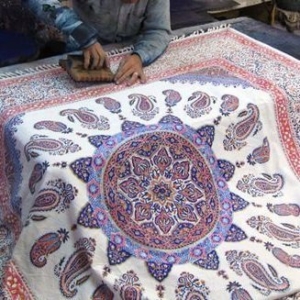
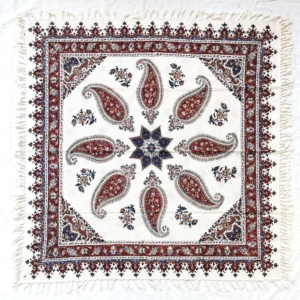
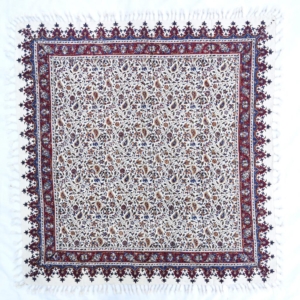
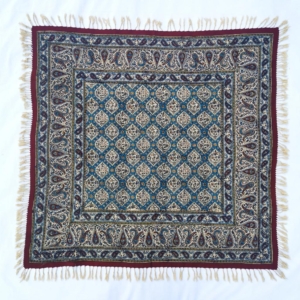
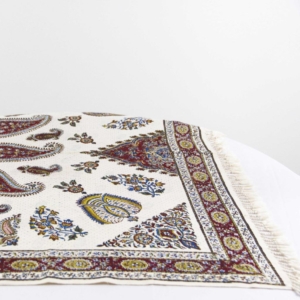
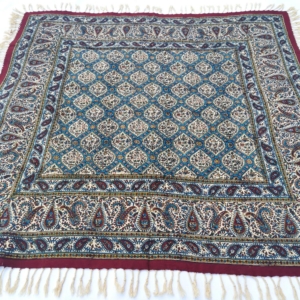
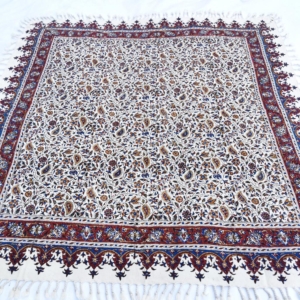

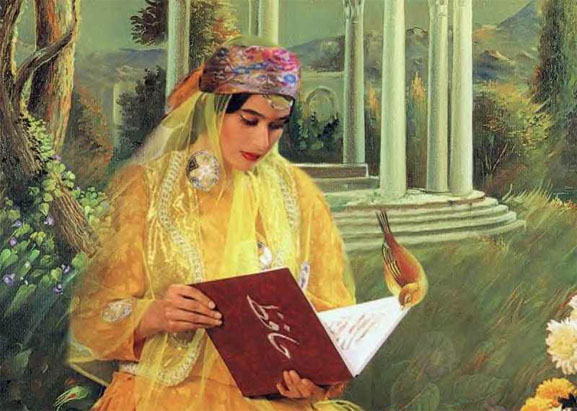
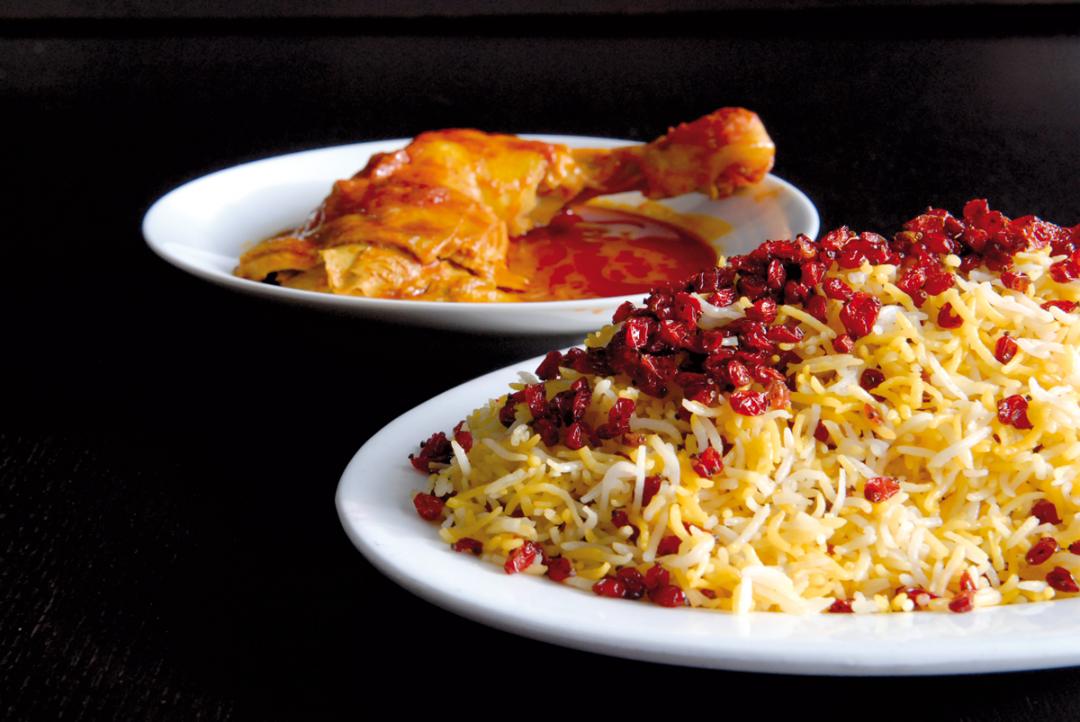
Comments